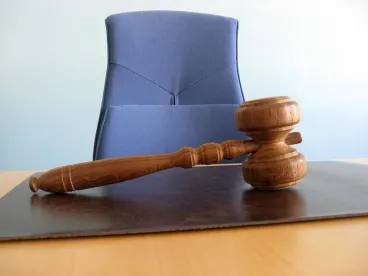The COVID-19 pandemic continues to keep many lawyers, clients and witnesses at home. As we discussed in a previous post, many courts are encouraging or requiring remote depositions, typically by videoconference, to keep discovery moving. Lawyers taking these depositions will have to do all of the things they usually do and more to deal with the challenges of a deposition environment unfamiliar to many of us.
With thanks to our Faegre Drinker colleagues who have ventured into this new world and shared a great deal of useful advice with the authors, we discuss some of the practical considerations for lawyers taking remote depositions.
The most obvious difference we all must deal with is that video technology replaces face-to-face interaction; this requires learning a new skill set. Comment 8 to Model Rule of Professional Responsibility 1.1 says that “a lawyer should keep abreast of changes in the law and its practice, including the benefits and risks associated with relevant technology.” Common sense tells us that we have to get on top of these changes if we want to take and defend remote depositions successfully. Lawyers not only need to learn the technology and use it effectively but also how to safeguard privileged information and prevent unauthorized access to confidential testimony when depositions are no longer taken with only the people “in the room.”
Start with the choice of vendor and technology. Major vendors now provide remote deposition technology along with training and even equipment, if needed. Of course, lawyers must consider client requirements along with their own preferences, but when taking one’s first remote deposition, advice from colleagues who have “been there, done that” may be the surest way to get this right.
Next, an old adage becomes the wisest advice: practice makes perfect. It is not enough to read a guide or watch a video from your deposition vendor. The best-prepared lawyers and witnesses conduct dry runs and learn “hands on” how to set up the environment for the best testimony, how to connect by video and mute audio, how to review and share exhibits, and how to communicate confidentially with co-counsel or witnesses (when permitted) to maintain privilege. Vendors can provide key training and technical support to ensure quality audio and video connections and adequate bandwidth, but to ensure a (reasonably) smooth deposition, you need to take a test drive.
On many of these issues, thinking of others also is a way to help yourself. If you are comfortable with the technology but the other lawyers or the witness are completely at sea, the likely result will be delay, disruption and a less than optimal record – and possibly unnecessary discovery disputes that add cost and slow the progress of the case. If there will be a series of remote depositions, they may go more smoothly if you negotiate the use of a single vendor and technology platform for all of them. In all events, do what you can to ensure that all participants are ready to handle the technology, and make a record of your efforts.
Next, turn to the notice. The usual form should be revised to indicate which vendor and technology will be used, what equipment participants need, what information must be provided in advance by other participants so they can gain access and where they can go for additional information on the technology. Also, consider how the oath will be administered; some jurisdictions have adjusted the rules to allow the reporter to do so remotely. Some courts have imposed requirements including modifications to the notice or formal stipulations.
Modify your standard instructions to the witness to add clear direction about the technology, including how exhibits will be shared. Instruct the witness and counsel what to do if the technology fails, and provide a separate number to call or text if they lose connection. Some participants may join by phone rather than video, so check how the technology will identify the participants and make sure the record reflects clearly who is getting access. And have a clear understanding with all participants about who will be recorded: only the witness or the counsel as well. Unless dictated by court order, make sure all understandings about the process are documented in writing or stated on the record at deposition.
Also modify your “what did you do to prepare” questions. Find out what the witness did to prepare to testify remotely – and whether he has done this before or frequently uses videoconferencing in a business or personal setting (establish level of familiarity with the environment). Confirm the witness has been briefed on how the technology works. Ask him to confirm he is not communicating by text, chat or otherwise with others and secure a promise he will not do so during your questioning (he may be allowed to do so on breaks). Have him identify anything he brought with him to consult during the deposition. And watch for signs of coaching during the questions, such as a witness who frequently looks elsewhere in the room before answering or appears to be handling a phone or other device. If possible, set up the video of the witness so you can see him and the table in front of him and can observe whether he is looking at paper or a phone. At the end of the deposition, ask for confirmation that the witness did not consult undisclosed sources of information during the questioning or communicate with others while answering.
You will need a plan for how exhibits will be shared remotely. There are several options. Vendors have technology that allows exhibits to be revealed and shared in real time on screen, though some lawyers and witnesses find it awkward or difficult to review lengthy documents on a screen without the ability to turn pages in a paper copy.
An alternative is to send paper copies in advance to all participants, but if you do not want the other side to review them before the deposition, send them in separate sealed envelopes and secure an agreement that they will be opened and reviewed only if and when identified during the deposition. Another option is to provide exhibits for the reporter to mark and provide only as they are identified; but that works only if the reporter is physically present with the witness and defending lawyer – likely not the case while social distancing rules remain in effect. In appropriate cases, you may consider a hybrid approach, providing some hard copies in advance for convenient use at the deposition – especially lengthy exhibits that everyone has reviewed on both sides and that everyone would expect would come up at the deposition.
State all agreements about exhibit-handling on the record, and confirm that all counsel were told before the deposition how exhibits would be shared. Confirm that the witness was trained or practiced with the technology; if she is not familiar, be prepared to give a brief tutorial. Get the witness (and if possible opposing counsel) to confirm that the technology did not prevent the witness from reviewing the exhibits and giving complete answers, or prevent counsel from reviewing and advising as needed.
Finally, if possible, have someone else assist with exhibits during the deposition, especially if they are being shared on screen using a web interface provided by the vendor. It is easier to communicate with the witness and listen to the answers if you don’t also have to manage the document technology at the same time.






 />i
/>i
